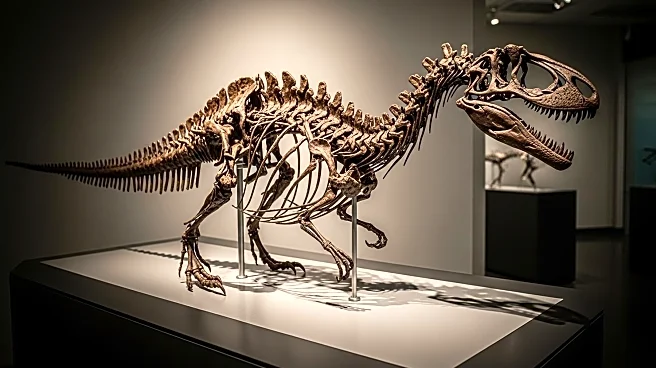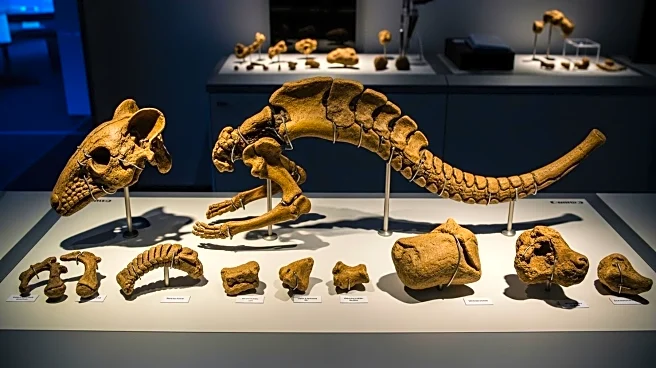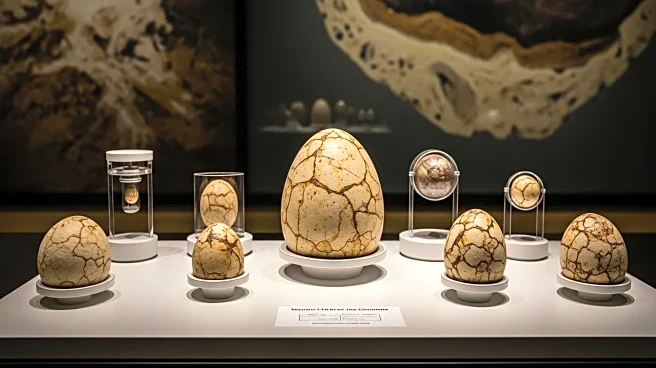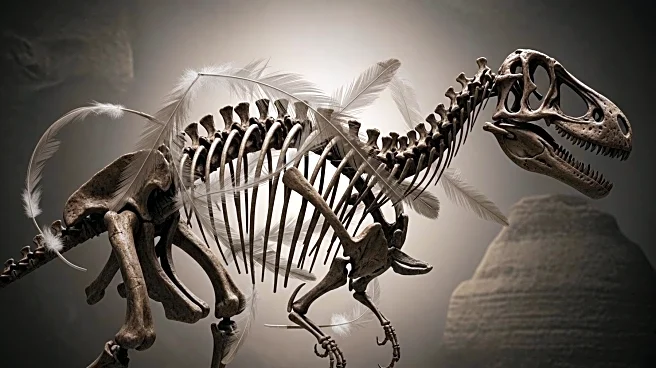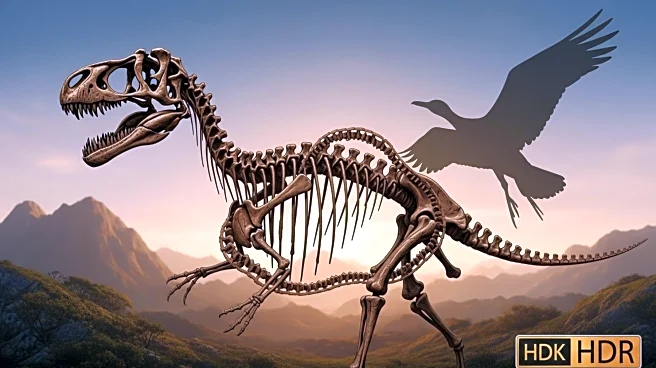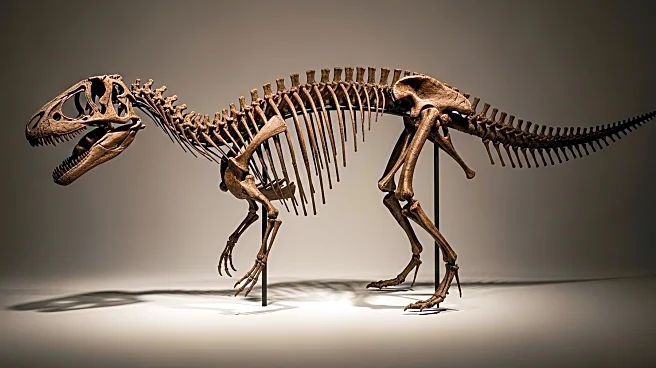What is the story about?
What's Happening?
Palaeontologists at the University of Bristol have identified a new dinosaur species, Newtonsaurus cambrensis, from a fossil discovered in Penarth, South Wales in 1899. Using modern digital scanning technology, the team reconstructed the fossilized jawbone, revealing it belonged to a large carnivorous theropod dinosaur that roamed South Wales during the Triassic period. The preserved jawbone measures 28cm, suggesting the dinosaur had a body length of 5-7 meters. The discovery was facilitated by advances in 3D technology, allowing for detailed analysis of historical specimens.
Why It's Important?
The identification of Newtonsaurus cambrensis adds significant knowledge to the understanding of dinosaur species that existed in the Triassic period. This discovery highlights the importance of historical specimens in paleontology, which can yield new insights even after many years. The use of advanced technology in fossil analysis opens possibilities for further discoveries, potentially leading to a deeper understanding of prehistoric life and the evolutionary history of dinosaurs.
AI Generated Content
Do you find this article useful?
